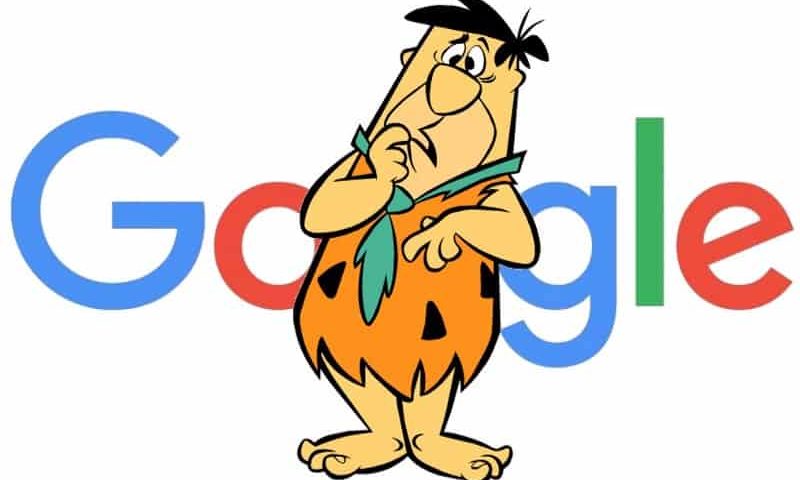- 0243394034
- info@centralcoastseo.com.au
- Google 1st Pages Guaranteed in Writing.
Google’s Fred Update: What Is It and It Still Matters

Google’s famous Fred update has just turned two. And like a parent who knows their kid is going through the terrible twos, Fred continues to give those impacted cold sweats and sleepless nights. Because back when it was launched, millions of sites experienced a huge shift in traffic after being hit by the tantrum Fred threw.
Here’s what you need to know about this algorithm change and why the lessons learned are more valid than ever, two years on.
Keyword(s): Google Fred Update
If you were doing SEO in March 2017, you probably remember the nightmare that was the Google Fred update. You know, the one that created web traffic nosedives of 50-90% on certain sites.
What is the Fred update, and how does it affect you and your SEO tactics? Keep reading to find out how Fred works and how to keep your traffic Google-proof.
What is the Google Fred Update?
First of all: what is the Google Fred update? Fred is an unconfirmed update by Google, so named based on a tongue-in-cheek tweet by Gary Illyes, a Google Webmaster Trends Analyst. Unconfirmed, because Google didn’t initially announce the update as it normally does with more fluffy-named updates like Penguin and Hummingbird. Google eventually confirmed Fred a few weeks later. We know the update made a huge impact on the algorithm, though, based on the massive hits to organic web traffic that many sites were reporting. There was also major fluctuation in automated tracking tools.
What Fred Does?
Unsurprisingly, Google hasn’t been forthcoming about what exactly the Fred update does. What many SEO specialists have concluded, however, is that Fred’s primary target is aggressive monetization tactics. The websites who saw major traffic changes had one or all of the following in common:
- Low-quality backlinks
- Low-quality content
- Keyword stuffing
- Excessive ads or affiliate links
We can extract from this a few things about the Google Fred update. The big point is that Fred targeted sites that were written primarily to game Google’s algorithm for monetization without providing valuable content to their readers. In this context, Fred is hardly surprising–Google has been updating their algorithm to fight low-quality content for years. Fred is a bit more aggressive.
Why the Fred Update?
If we consider Google’s primary goals behind all of their updates — streamlining the algorithm to provide higher quality content to Google users — then the Google Fred update makes a lot of sense. Fred is part of a string of updates since 2015 that were not connected to the Panda update but worked towards the same general goal. What is that goal? We know what it is if we look at who was impacted by Fred (and how they were impacted).
Who Is Most Affected?
First, who was most negatively impacted by the Fred update? The vast majority of websites who saw nosedives in their organic web traffic had a lot of aggressive monetization and were stuffed with generic content that ranked well without providing much value to the user. By aggressive monetization, we mean sites that were more interested in advertising than providing actual content.
Who was Helped by Fred?
You might be surprised, however, to learn that some sites were actually helped by the Fred update. In fact, some sites saw gains of more than 100% after the introduction of Fred.
Who were they? Sites that were on the flipside — especially those with diverse, high-quality content. In other words, Google is punishing those who choose monetization over good content and rewarding those who properly balance the two.
Was Your SEO Affected by Fred?
Unless you weren’t on the Internet at all, it probably was. If you saw traffic fluctuation around the time of the update, either positive or negative, it’s time to run through a checklist:
- What is the quality of your content?
- What is the quality of your backlinks?
- How much of your website is monetization, including ads and affiliate links?
- What’s the quality of your user engagement?
This will give you a framework on where to get started with Fred.
Bouncing Back from the Google Fred Update
Whether your SEO was helped by Fred or whether it stumbled, the fluctuations brought by Fred prove a valuable point: that your SEO must withstand the future (and future Google updates that rewrite SEO rules).
How It Changes Your SEO
The single quickest way to change your SEO after Fred? Remove ads. This was done by most sites that reported quick recovery time following the update. However, this is often unrealistic for many sites, so you need to explore long-term recovery options. These include:
- Producing strong content
- Using ads strategically
- Not abusing affiliate links
What does that mean in the long term? Ultimately, SEO that can survive regardless of Google rewrites.
Google-Proofing Your SEO
Your goal shouldn’t be to Fred-proof your SEO. Your goal should be to Google-proof your SEO. A good first step is that old SEO mantra: content is king.
Google-Proof Content
Stay away from generic, keyword-stuffed content and focus instead on content that provides real value to your readers. Providing value to your readers will help you focus on searcher intent with clear answers to the questions people type into the Google search bar.
That isn’t limited to written content, either. It includes video and social media, which can both be leveraged to your advantage. While you’re working on good content, get friendly with a website auditing tool. This will help you know what content is driving traffic and where to tidy your metrics.
Google-Proof Web Design
You should also check your web-design. Fred also rewarded sites with visually appealing design–that is, sites that were pretty for humans and crawlers alike.
How do you make sense of your design? Start by going back to your audience. A clear target audience profile can help define what your ideal viewer is looking for in a website. You should also start using click tracking and heat mapping. These will help you see how users are engaging with your site design, which makes it easier to figure out what you can do better.
Making Sense of SEO in the Face of Google
Ready to take Google by storm? It all starts with good SEO. And that’s why learning the lessons Fred taught us in 2017 an applying them to your website in 2019.
Need to get your business on the first page of Google? No worries, we’ve got you covered. To contact the best SEO company on the Central Coast, simply call (02) 433 94034 for a no-obligation quote. The first page of Google is only a phone call away.


















